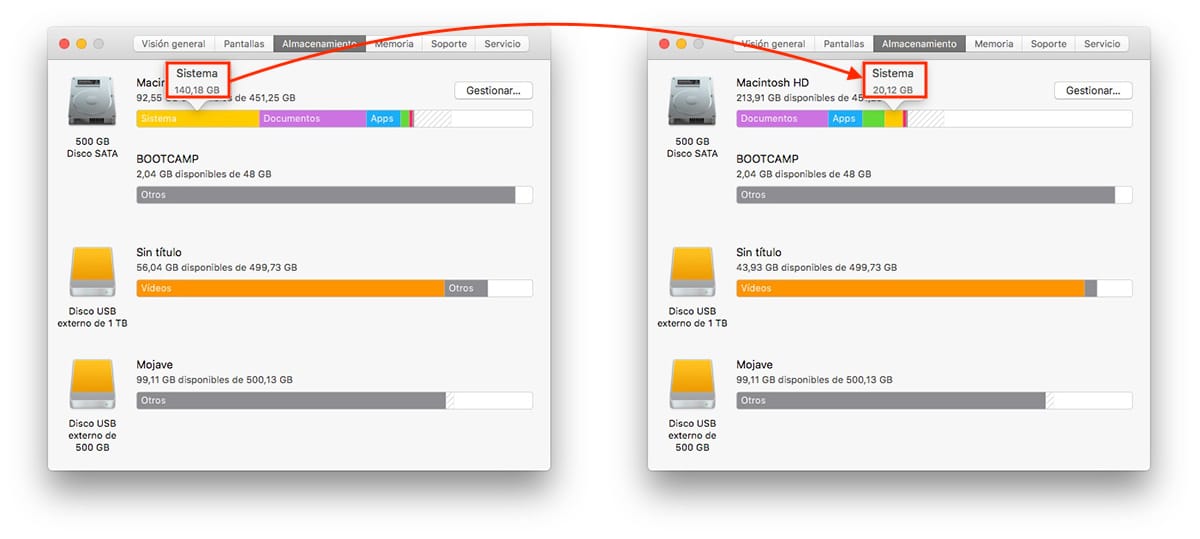
The storage space on our hard drive or mobile device is a valuable asset that we only worry about when we see the equipment starts to work erratically or when it informs us that we're running out of storage space. While on an iPhone or Android, we quickly have the solution by deleting applications, on macOS not.
Apple introduced a new function in macOS within the Storage tab that allows us manage and consult how our hard drive is being used at all times, a function that is fine, but which lacks functions, especially when we talk about the space our system occupies, a problem that we address and solve in this article.
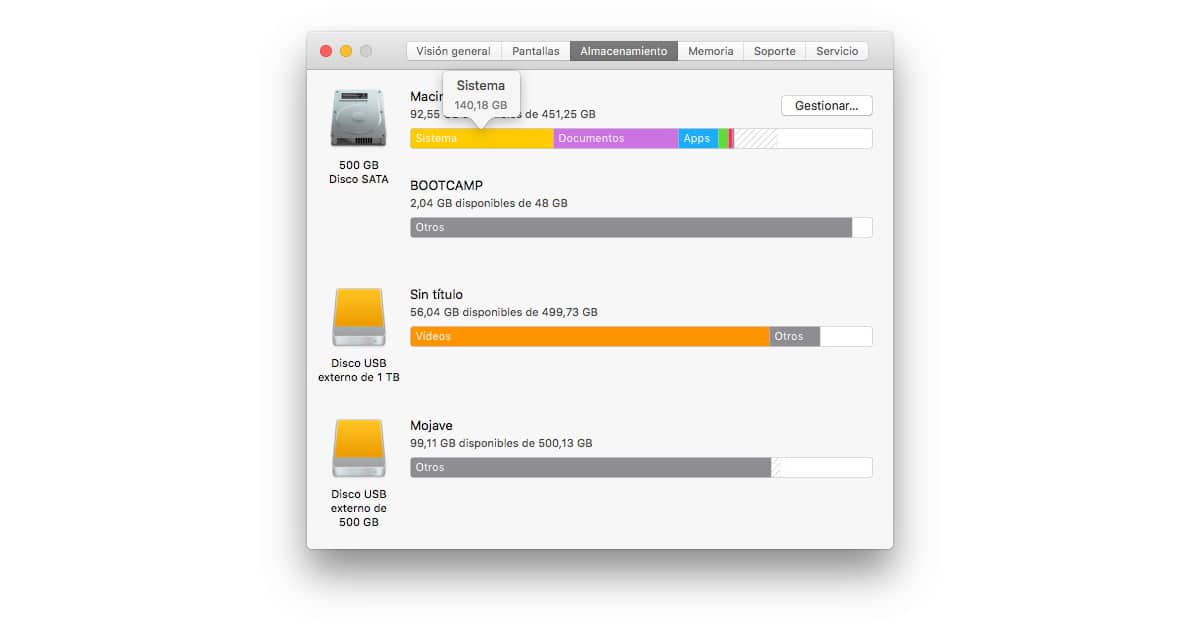
Operating systems for computers are taking up more and more and it is not uncommon for the space it occupies on our Mac, in the event that it blocks us, to occupy between 20 and 40 GB. In my case, as you can see in the image that heads this article, the system occupied 140 GB, a disproportionate size no matter where you look.
To try to find out what was happening, I tried (although I already knew the result) the macOS function that allows us to see in which our equipment is being used. Result: I stayed the same. This function does not provide detailed information on the size of the system, in my case 140 GB, so I got down to work to find a solution, a solution that by the way Apple does not offer us either through the technical service or through the support page.
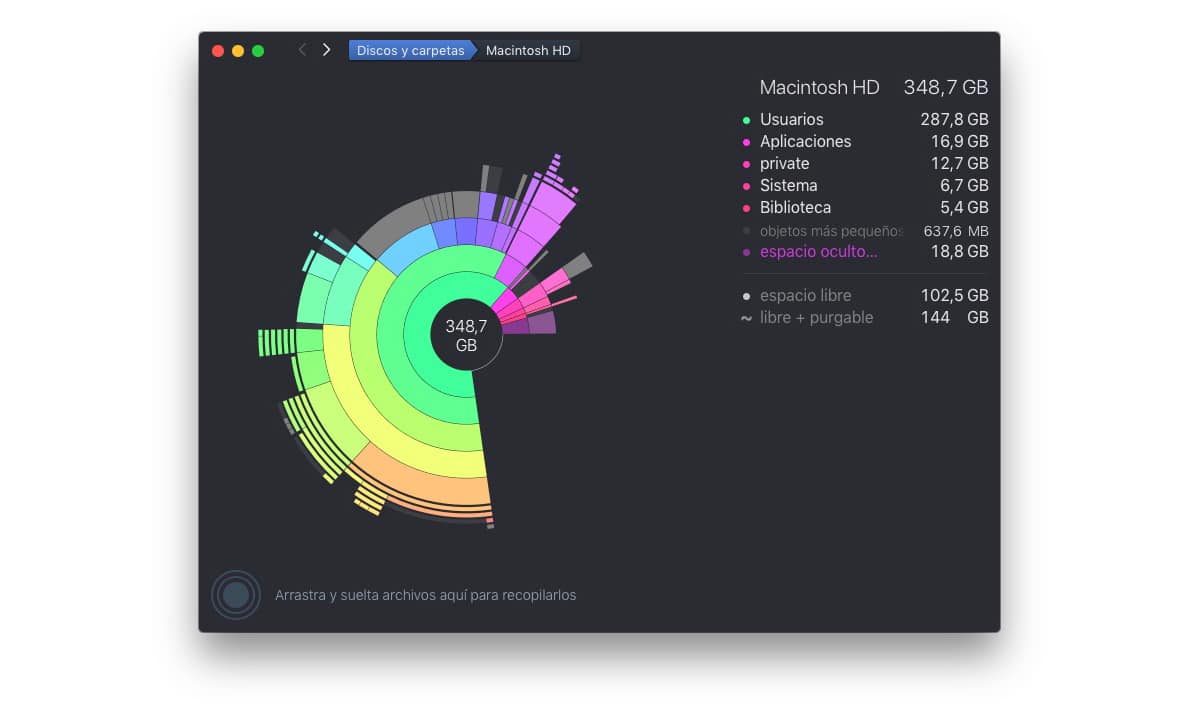
Daisydisk
After several applications, I came up with the solution: DaisyDisk. Thanks to this application, I was able to verify what was happening with the occupied space of my Mac. As you can see in the image above, after scanning the hard drive in question, the application offered me the same results as the native function of the Mac, but in another way, distributing the space differently.
DaisyDisk independently shows us the space occupied by the different users that we have created on our computer, as well as the applications, the system ... It not only shows us what each category occupies, but also allows us identify which applications are using it and the directories where they are.
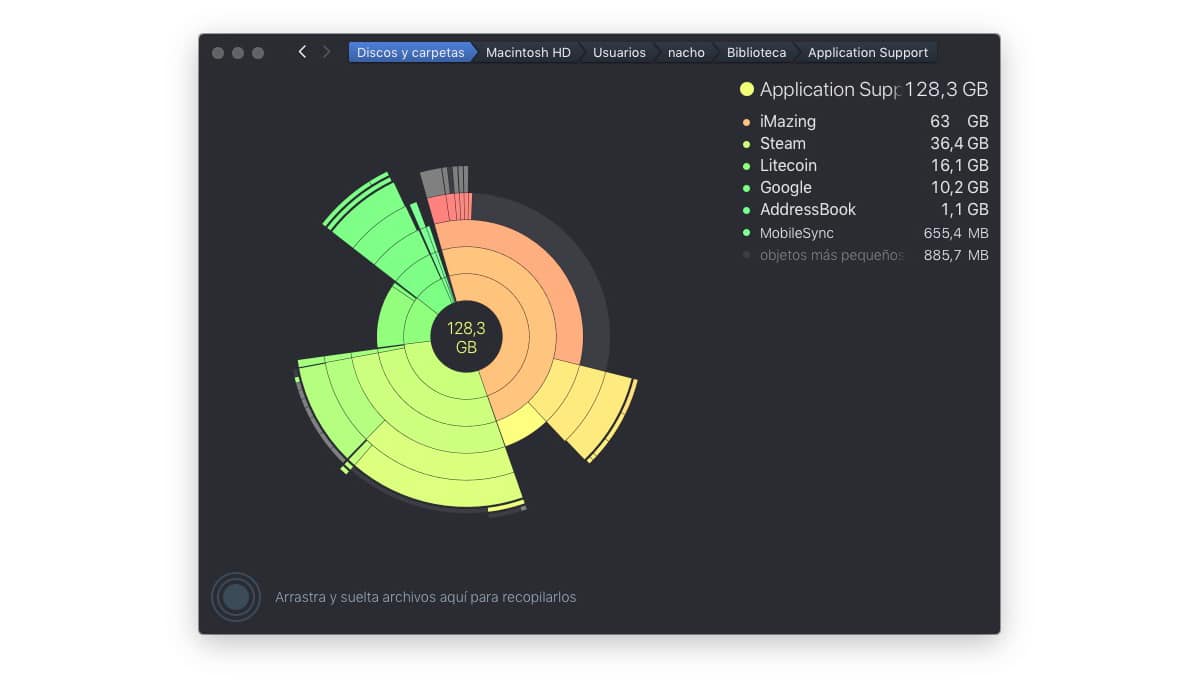
In my case, the problem was found in Users, with 287 GB of space. By accessing Users> Nacho (my username)> Library> Application Support, you can check how 63 GB was being occupied by iMazing, an app that you had deleted more than a year ago and that he had not used again.
Another of the applications that occupied a considerable size on my computer is Steam with 36 GB, where I have two games installed and Litecoin with 16 GB, an application that I had to test for work issues and that I only had it installed on my computer for a week. These three applications occupied a total of 115 GB for me.
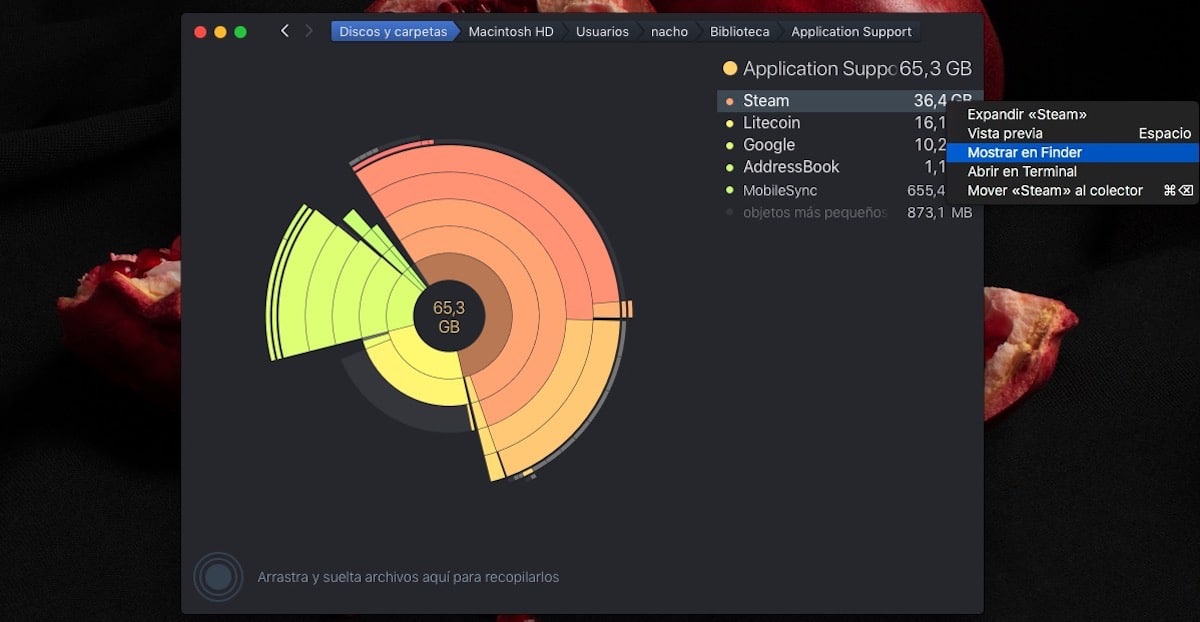
The problem is no longer the space they occupy, but rather macOS is unable to identify that space and encompasses it within the system, without offering us the possibility of being able to eliminate it manually without having to resort to third-party applications.
Thanks to DaisyDisk, I have not only been able to to know the truth, but also allows me directly access the folder where those files are located and send them to the trash directly, a function that macOS should offer us, especially when the space of the SSDs that it implements in its computers is not exactly cheap.
DaisyDisk, in addition to showing real information about how busy our hard disk is, also offers us graphics, which allow us to quickly get an idea of the space that applications are occupying in each of the folders that we access. If you like graphics, you will probably appreciate it, but it is useless, except visual.
Best of all, this application is very cheap for what it actually does. DaisyDisk is priced at 10,99 euros, a more than adjusted price for the fantastic function it offers. The application is available on the Mac App Store and on the official developer page at the same price. The only but, is that on your website The latest version of the application is always available before its launch on the Mac App Store.
From the DaisyDisk website, we can download a trial version, version with which you can check for yourself how it allows us to free up that system space that we cannot identify in any other way, unless we dedicate ourselves exclusively to analyzing, directory by directory, the size of all the applications that we have or have we have installed in our equipment, a task that can take us many hours.
Disk Inventory
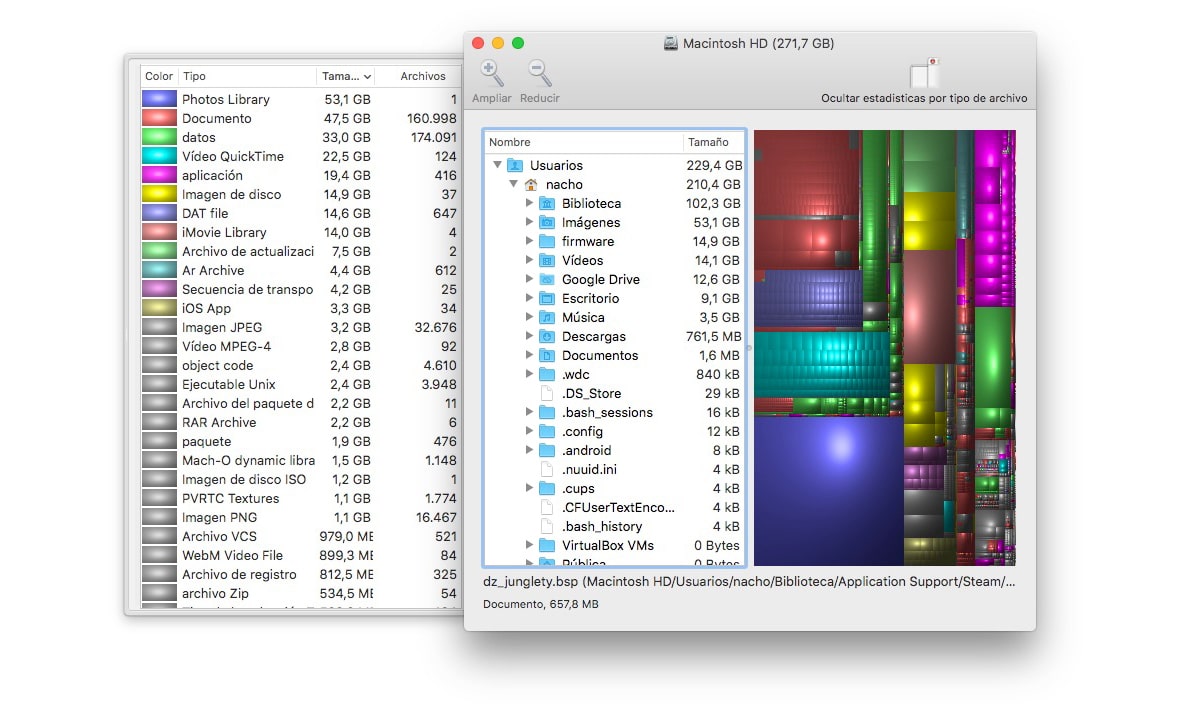
Another of the applications that we have at our disposal to be able to get rid of the space that the system occupies on our computer is Disk Inventory X, a free app that analyzes our storage to break down the space occupied by each and every one of the directories that we have in our version of macOS.
The main difference between both applications is the aesthetics, the user interface. While DaisyDisk offers us a very simple interface to use, Disk Inventory X has a complex interface, very unintuitive and on more than one occasion, we ended up closing the application instead of going back to the previous step.
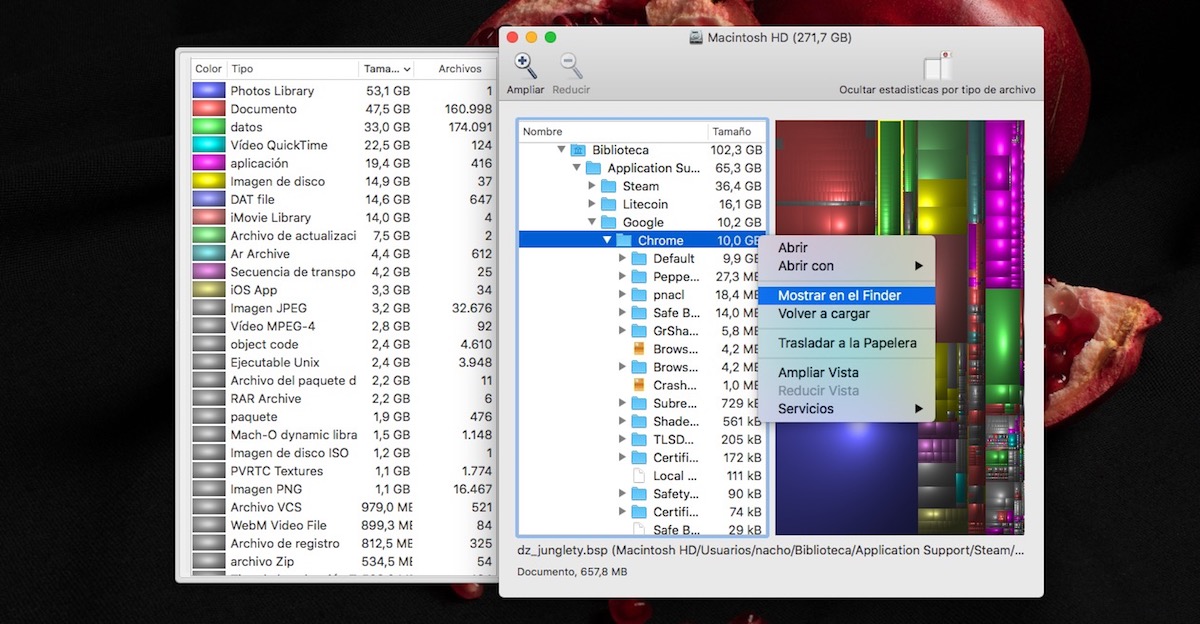
Regarding its operation, Disk Inventory X works the same way as DaisyDisk, independently showing us the space occupied by the directories on our hard drive, directories that we can access from the application itself to proceed to delete them and thus free up the space that our system occupies. Unlike DaisyDisk, Disk Inventory is available for download directly from the developer's website and is completely free.
So now what?

Once we have proceeded to eliminate the space of the applications that were counted as system space, we have to access again About This Mac> Storage> Manage For macOS to recalculate the total space of the system, once we have eliminated the data that was wrongly part of it.
To avoid that time, our system becomes a sinkhole of GB, the best we can do is sign up on the agenda spend every month, either of these two applications, in order to check if our system has grown excessively again or continues to function normally.
GrandPerspective is a very easy to use free alternative. It seems to me that he is at the height of Daisy
Excellent post! I had 90 GB of audio that I used for laburos, which I didn't need and didn't even know they were there! I did everything with the Disk Inventory that although it is more "ugly", it perfectly fulfills the objective.
Thank you!
EXCELLENT POST, I HAD MY SYSTEM WITH OVER 300GB BUSY.
100 points
Excellent I was looking for this article 1 year ago, I have ghost steam games that I cannot delete that occupy me 50gb I hope that daisy disk achieves it, excellent article greetings
How do I know what files I can delete without affecting the performance of my Mac?